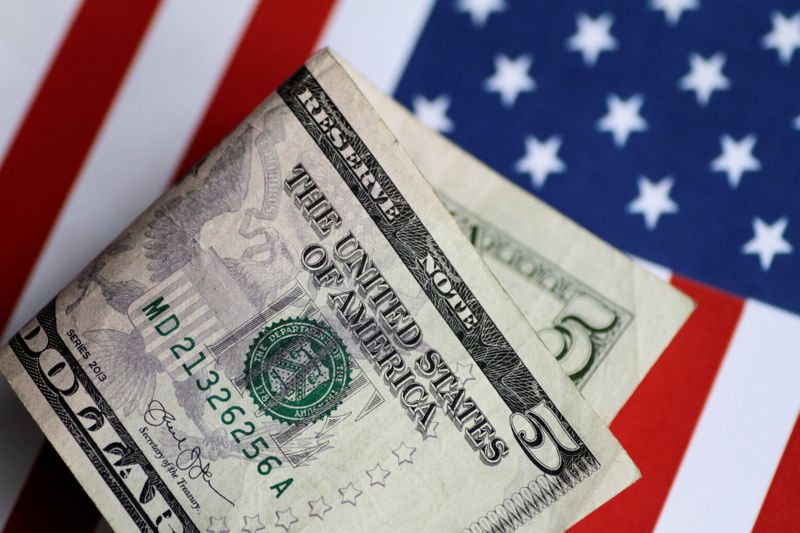By Peter Nurse
Investing.com - The dollar edged higher in early European trade Thursday, with the safe haven currency supported by concerns of an earlier than expected Federal Reserve response to inflationary pressures in the wake of worryingly large jump in U.S. consumer prices.
At 2 AM ET (0700 GMT), the U.S. Dollar Index, which tracks the greenback against a basket of six other currencies, was up 0.1% at 90.775, around its highest level in a week.
EUR/USD traded 0.1% higher at 1.2075, after dropping around 0.6% the previous session, GBP/USD was flat at 1.4052, and USD/JPY was up 0.1% at 109.73, close to its strongest level in five weeks. AUD/USD fell 0.2% to 0.7712, while NZD/USD rose 0.1% to 0.7160, benefiting from further plans to open the New Zealand economy.
The main driver of these dollar gains has been the surge in U.S. inflation, and the concern this will force the Fed to move away from its ultra-easy monetary policies sooner than its current guidance suggests.
The consumer price index rose 4.2% in April from a year ago, according to data released on Wednesday, well above consensus forecasts for 3.6% and climbing to its highest rate since the eve of the 2008 financial crisis.
Benchmark 10-year U.S. Treasury yields rose to a five-week high above 1.70% overnight, increasing the appeal of dollar-denominated assets, but have since edged back down to 1.685%.
Fed speakers have been very keen to make clear that they expected a bounce in prices as last year's collapse in oil prices and a nascent economic recovery worked its way through the system, but they saw this increase as temporary.
St. Louis Federal Reserve President James Bullard on Tuesday acknowledged the progress the U.S. economy had made, but said it’s still not time to ease back the throttle on policy. He speaks again later Thursday, and the market will be waiting to see whether the CPI number changes his tune at all.
The dollar gains in the foreign exchange markets have been relatively limited, suggesting traders are taking the Fed largely at its word, at least for now. That said, they will turn their close attention to U.S. weekly jobless claims due later on Thursday and retail sales numbers on Friday for guidance on whether the upward pressure on prices will persist.
“From an FX perspective, a higher inflation reading is unlikely to be dollar-positive as long as the Fed sticks to its view ... that the spike in prices should be temporary and there is no need to turn less accommodative,” said analysts at ING, in a note.
“With front-end rates capped and inflation jumping, the dollar is set to retain a deeply negative real rate, which should ultimately assist a bearish USD trend in the remainder of the year.”
